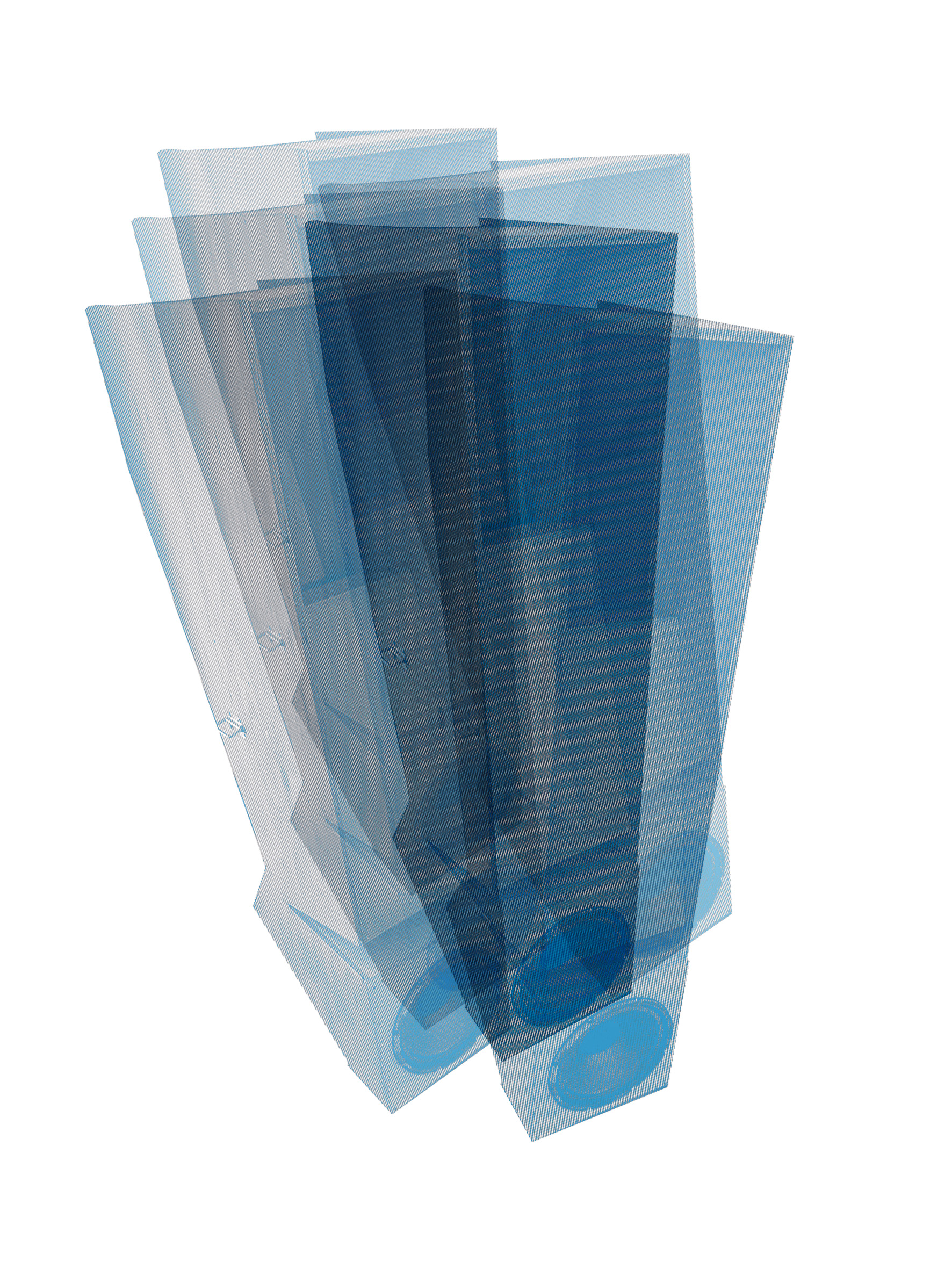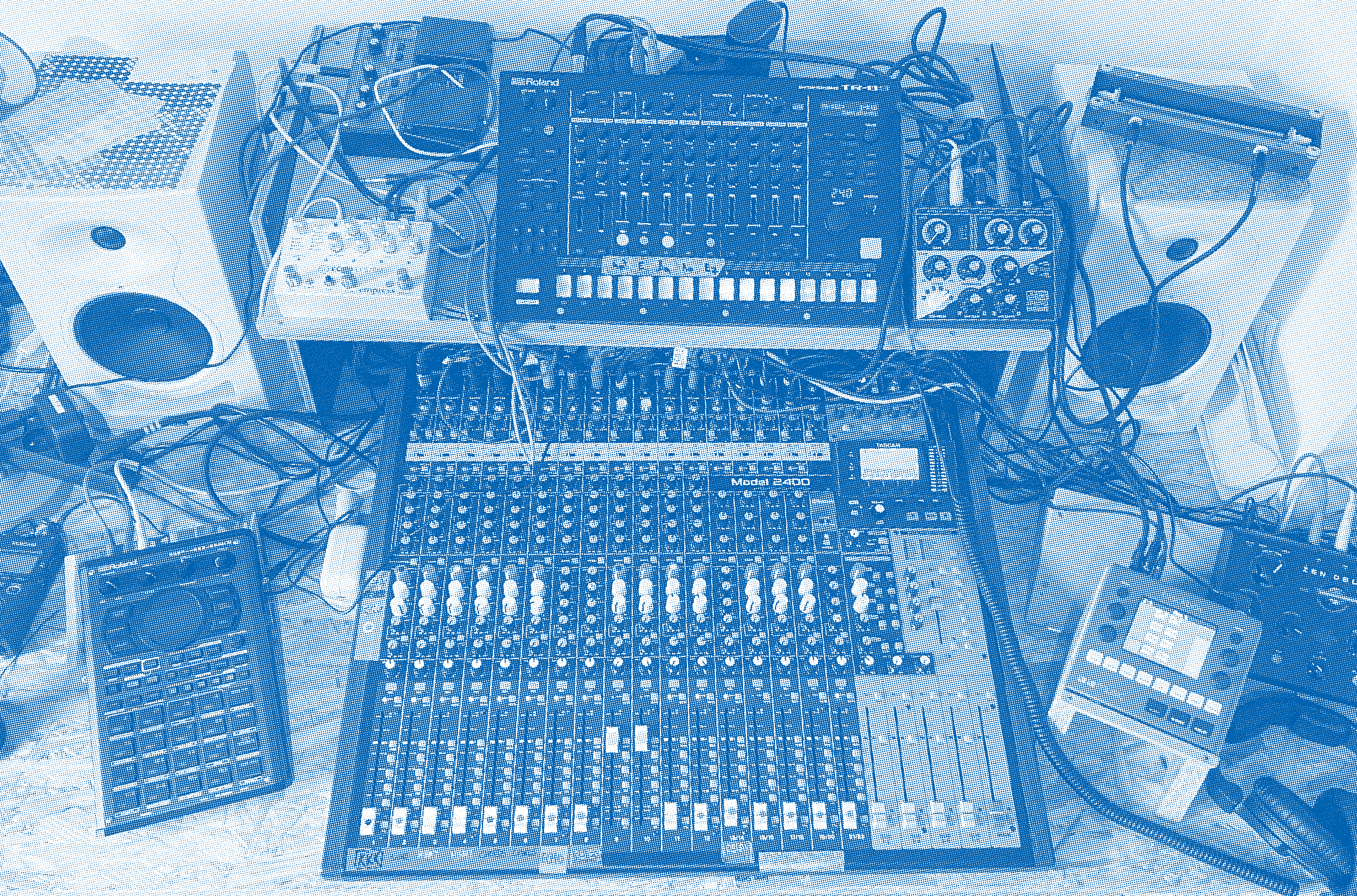‘Sketch for a Spatial Composition’ – sound as space

Work-in-progress, public ‘soundcheck’
My fascination with dub music – from dub techno to the early Jamaican dub of the 1970s – lies at the foundation of this installation. In dub, sound is manipulated with spatial effects such as echo/delay, reverb, and filtering, with the mixing desk itself becoming a performative instrument. I follow a similar method: recording a sound, manipulating it live with delay and reverb through a mixer, re-recording the result on a new track, and using that as raw material for composition. It is a form of live sound sculpting, where sound is continuously reshaped, reused, and reinserted.

With this work I explore the spatial and sculptural possibilities of sound, driven by a technical and experimental curiosity: how can a composition move through multiple loudspeakers? How does an echo behave when it shifts not only in time but also in space? How can the loudspeakers themselves – and the space in which they are placed, as an acoustic chamber of resonance and reflection – become part of the work?
These questions led me to work with a set of self-built speakers, including a back-loaded horn speaker. Building this speaker was already a project in itself: based on acoustic principles in which the woofer’s sound travels through an internal horn path before it is released. This produces a natural and open resonance, ideal for deep, breathing bass.
The composition unfolds in multiple layers, each with its own spatialisation. A sound may quickly move from one speaker to another, while a heavy bass drum rolls slowly through the room.
I work with both field recordings and self-made sounds shaped with delays, reverbs, filters, and mixer interventions – sampling and resampling. Into this I weave fragments from my dub-techno project, percussive textures, and recordings of transit zones – including, for example, a train station in India.
The resulting space is not a representation of one identifiable location, but an imaginary, layered auditory topography. Not a classical soundscape, but a sonic assemblage where fragments of urbanity, nature, movement, memory, and inner motives intermingle. Instead of evoking a single location, it creates a reconstructed and transformed mental sound map of passages.
I see this setup as a transitional phase – an artistic research process that is still very much in growth. It involves new speakers, new experiments with form, and future installations in large spaces where the architecture itself, or even multiple rooms, will serve as resonant chambers. At the same time, I want to explore how image and sound can enter into dialogue. In my graphic work – especially screen print – I often work with transparent colour layers and raster patterns that interfere, shift, and disappear. That graphic way of seeing and working strongly parallels how I approach sound: layered, mutable, and interferential.
‘Sketch for a Spatial Composition’ will first be presented in an intimate setting during Kunstroute Hoegaarden – Skip the Weekend 2025 (13–14 September), before unfolding further in a larger industrial space in Brussels at the end of November.